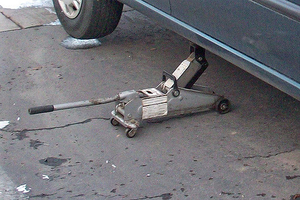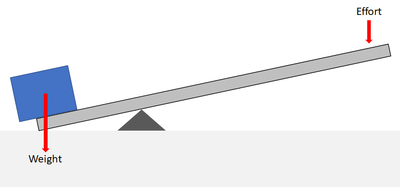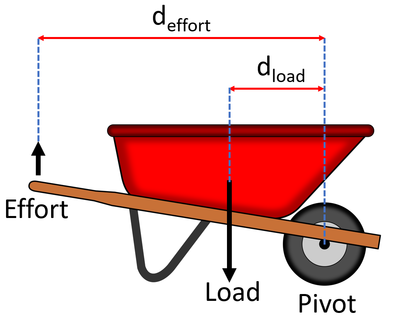Difference between revisions of "Lever"
| Line 57: | Line 57: | ||
:[https://www.amazon.co.uk/gp/product/1471851370/ref=as_li_tl?ie=UTF8&camp=1634&creative=6738&creativeASIN=1471851370&linkCode=as2&tag=nrjc-21&linkId=01c69b0ae058f809cf636033e6ba793e ''Levers, pages 130-1, GCSE Physics, Hodder, AQA ''] | :[https://www.amazon.co.uk/gp/product/1471851370/ref=as_li_tl?ie=UTF8&camp=1634&creative=6738&creativeASIN=1471851370&linkCode=as2&tag=nrjc-21&linkId=01c69b0ae058f809cf636033e6ba793e ''Levers, pages 130-1, GCSE Physics, Hodder, AQA ''] | ||
:[https://www.amazon.co.uk/gp/product/1782945970/ref=as_li_tl?ie=UTF8&camp=1634&creative=6738&creativeASIN=1782945970&linkCode=as2&tag=nrjc-21&linkId=a120d24dcc7cc7a58192069a3aafc1d2 ''Levers, pages 166, 167, GCSE Physics; The Complete 9-1 Course for AQA, CGP, AQA ''] | :[https://www.amazon.co.uk/gp/product/1782945970/ref=as_li_tl?ie=UTF8&camp=1634&creative=6738&creativeASIN=1782945970&linkCode=as2&tag=nrjc-21&linkId=a120d24dcc7cc7a58192069a3aafc1d2 ''Levers, pages 166, 167, GCSE Physics; The Complete 9-1 Course for AQA, CGP, AQA ''] | ||
| + | |||
| + | ====Edexcel==== | ||
| + | |||
| + | :[https://www.amazon.co.uk/gp/product/1292120223/ref=as_li_tl?ie=UTF8&camp=1634&creative=6738&creativeASIN=1292120223&linkCode=as2&tag=nrjc-21&linkId=068ecf40278c32406a7f1c6e66751417 ''Levers, page 137, GCSE Physics, Pearson Edexcel ''] | ||
| + | :[https://www.amazon.co.uk/gp/product/1782948163/ref=as_li_tl?ie=UTF8&camp=1634&creative=6738&creativeASIN=1782948163&linkCode=as2&tag=nrjc-21&linkId=0fdbfd5dd397d6e24a9dfb250f08587f ''Levers, page 213, GCSE Physics, CGP, Edexcel ''] | ||
| + | :[https://www.amazon.co.uk/gp/product/1782945733/ref=as_li_tl?ie=UTF8&camp=1634&creative=6738&creativeASIN=1782945733&linkCode=as2&tag=nrjc-21&linkId=2a2dbec9db6bf5766c0458d908fa0a52 ''Levers, page 69, GCSE Physics; The Revision Guide, CGP, Edexcel ''] | ||
Revision as of 11:08, 22 November 2019
Contents
Key Stage 2
Meaning
A lever is a tool which can be used to make lifting easier.
About Levers
- Levers are used to lift cars with a jack, pull out nails with a hammer and to break locks with a crowbar.
- A lever needs a long stiff rod and a pivot.
- A seesaw can work as a lever. If an adult sits close to the centre and a child sits at the far end, the child can lift the adult.
| A lever makes it easier to lift a heavy object. |
Key Stage 3
Meaning
A lever is a Force Multiplier or a Distance Multiplier that uses a pivot to create a moment.
About Levers
- Levers are used to lift cars with a jack, pull out nails with a hammer and to break locks with a crowbar.
- A lever needs a long stiff rod and a pivot.
| A lever makes it easier to lift a heavy object. |
Extra Information
Key Stage 4
Meaning
A lever is a Force Multiplier or a Distance Multiplier that uses a pivot to create a moment.
About Levers
- Levers work as force multipliers by applying a force of effort at a greater distance from the pivot than the force of load.
- A lever needs a long stiff rod and a pivot.
| The force of effort is 3 times further from the pivot than the force of load, so the effort is 3 times smaller than the load. |
References
AQA
- Lever, page 170, GCSE Physics; Student Book, Collins, AQA
- Levers, page 57, GCSE Physics; The Revision Guide, CGP, AQA
- Levers, pages 120-122, 127, GCSE Physics; Third Edition, Oxford University Press, AQA
- Levers, pages 130-1, GCSE Physics, Hodder, AQA
- Levers, pages 166, 167, GCSE Physics; The Complete 9-1 Course for AQA, CGP, AQA


